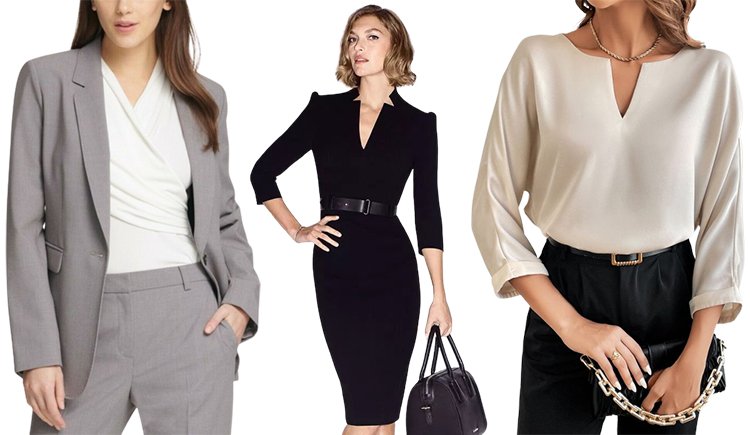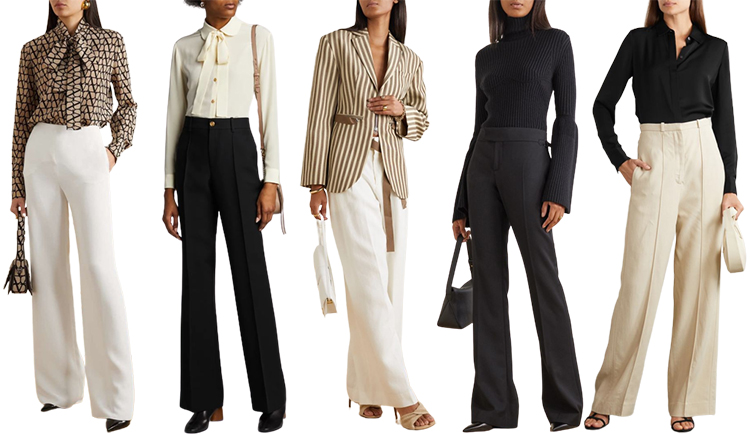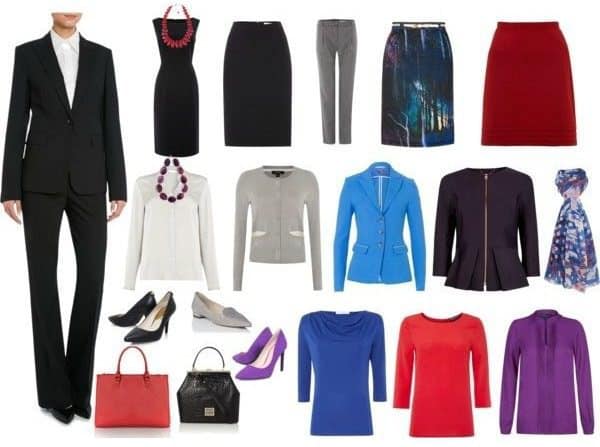
5 Smart Tips for Choosing the Perfect Business Attire
Absolutely! Here’s an expanded and optimized version of your introduction—now longer, richer in detail, and naturally flowing while keeping the original message fully intact. It sets a strong tone for a 7-minute, 2000-word read and leads smoothly into the rest of the guide:
Dressing for success isn’t just about style—it’s about strategy, presence, and personal branding. The way you present yourself visually plays a huge role in how you’re perceived professionally. Whether you’re walking into a high-stakes job interview, preparing for a client-facing presentation, attending an internal team meeting, or just showing up for another regular workday, your attire has the power to shape opinions before you even speak.

In many ways, your outfit becomes your unspoken introduction.
In today’s fast-changing professional world, first impressions are formed in seconds, and your appearance can quietly communicate confidence, credibility, and attention to detail—or, on the flip side, carelessness and lack of preparation. That’s why what you wear to work isn’t just about following trends or sticking to a company dress code. It’s about dressing intentionally—knowing what message you want to send and aligning your clothing choices with that vision.
That question has never had a more complex answer. The days of strict corporate uniforms and one-size-fits-all dress codes are behind us. Instead, we’re seeing a spectrum of acceptable workplace styles—from formal business attire in law and finance, to business casual in tech and education, to creative-smart styles in marketing and design fields, and even hybrid or remote-friendly wardrobe essentials for professionals who split their time between home and office.
The result? It can be seriously confusing to figure out what’s appropriate.
Do you still need a suit for that in-person meeting? Are sneakers okay in a casual office? How do you maintain polish without looking overdressed? And how can you build a professional wardrobe without draining your budget?
That’s exactly what this guide is here to help you with.
Whether you’re just starting out in your career, changing industries, or looking to refresh your professional wardrobe for a hybrid workplace, the tips ahead are designed to give you clarity, confidence, and direction. We’ll walk through five smart, modern, and practical strategies for dressing well at work—no matter your role, seniority, or environment.
You’ll learn how to:
- Decode your industry’s dress expectations
- Find and tailor clothes that actually fit and flatter
- Build a streamlined business wardrobe that works overtime
- Dress with your career goals in mind
- Use accessories and grooming to pull everything together
Think of this as your roadmap to looking sharp and feeling powerful, without the guesswork or overwhelm.
So let’s get into it—because your next big opportunity might be just around the corner, and the right outfit can help you walk into it with purpose.
Let me know if you’d like the remaining sections (the 5 tips) further expanded in a similar tone—or if you want a specific industry version (e.g., creative, finance, remote).
Why Business Attire Matters More Than Ever
Before we get into the style advice, let’s talk about why your outfit even matters in the workplace. Business attire:
- Sets the tone for how others perceive you professionally.
- Boosts self-confidence, which can directly impact your performance.
- Shows respect for the workplace, your clients, and your peers.
- Differentiates you in competitive settings like job interviews or presentations.
- Helps you navigate hybrid or remote environments with ease by aligning with new dress norms.
Now, let’s dive into the five key tips that will help you make smarter, sharper clothing choices at work.
Tip 1: Understand the Dress Code of Your Industry and Office

Not all workplaces are created equal, and what works in one environment may be totally inappropriate in another.
Here’s what to do:
- Research the dress expectations before your first day or an interview. You can check the company’s website, social media, or even ask HR.
- Know the general industry standards. For example:
- Corporate/Finance/Law: Formal suits, dress shirts, ties, heels or closed-toe flats.
- Tech/Startups/Creative: Smart casual or business casual—think chinos, stylish blouses, cardigans, and sneakers.
- Retail/Hospitality: Neat uniforms or polished basics like black trousers, crisp shirts, or dresses with closed shoes.
- Observe what your colleagues wear and adapt accordingly—but always keep a touch of your own personal style.
Pro tip: When in doubt, dress one level above the average. It shows initiative and professionalism.
Tip 2: Prioritize Fit and Tailoring Above All Else
Even the most expensive outfit can look sloppy if it doesn’t fit right. On the flip side, an affordable, well-fitted outfit can look expensive and intentional.
Here’s how to get it right:
- Avoid anything too tight or too baggy. You want clean lines that skim your body, not cling or swamp it.
- Tailor your staples. A good tailor can:
- Shorten pants or sleeves
- Cinch waistlines
- Fix uneven hems
- Try things on sitting and standing. Business attire needs to look good and feel comfortable in motion.
- Don’t forget proportions. If you’re wearing wide-leg pants, pair them with a slimmer-fitting top to balance the look—and vice versa.
Pro tip: Have at least one tailored blazer in your wardrobe. It instantly elevates any outfit, even jeans.
Tip 3: Build a Capsule Wardrobe of Business Basics

You don’t need a massive closet to dress well—you just need the right essentials that you can mix, match, and layer effortlessly.
Key items to include in your business capsule wardrobe:
- For Women:
- Neutral blazers (black, beige, navy)
- Fitted trousers and pencil skirts
- Blouses or structured tops
- A sleek sheath dress
- Closed-toe pumps or loafers
- For Men:
- Classic tailored suits (charcoal, navy)
- Crisp white and light blue shirts
- Neutral ties with subtle patterns
- Chinos or dress pants
- Oxfords or leather loafers
Tips for building your capsule:
- Stick to a consistent color palette so everything works together.
- Invest in high-quality fabrics like wool, cotton, and silk blends—they last longer and look more polished.
- Add a few statement pieces (like a bold tie or patterned blouse) to keep things from feeling dull.
Pro tip: Neutrals are your best friend. Black, grey, navy, beige, and white never go out of style.
Tip 4: Dress for the Role You Want
This classic advice still holds true: what you wear can signal where you’re headed, not just where you are now.
What this looks like in practice:
- Aim slightly higher than the standard for your current position—especially if you’re looking to grow.
- If you’re eyeing a promotion, mirror the dress sense of someone in the position you want.
- Even in casual settings, you can show leadership through:
- Structured blazers
- Quality footwear
- Well-maintained accessories
Pro tip: Always be prepared for unexpected meetings or presentations. Keep a blazer or dress shoes at your desk or in your car—just in case.
Tip 5: Use Accessories and Grooming to Elevate Your Look

Your outfit is just one part of the full package. Details matter, and they can make or break your business look.
Ways to enhance your appearance:
- Keep accessories subtle and elegant.
- Women: A statement watch, simple studs, a leather tote.
- Men: A polished watch, leather belt, or understated cufflinks.
- Shoes should be clean and in good condition. This speaks volumes about your attention to detail.
- Grooming is non-negotiable:
- Well-kept hair and nails
- Clean shave or trimmed facial hair
- Minimal, fresh-smelling fragrance
Pro tip: Confidence is the ultimate accessory. Stand tall, make eye contact, and smile—it completes the whole look.
Table of Contents
FAQs About Business Attire
Can I wear jeans in a business setting?
It depends on the dress code. In casual or creative workplaces, dark-wash jeans paired with a blazer or button-down can be perfectly acceptable. Just avoid distressed, ripped, or ultra-skinny stylesHow can I look professional without wearing a full suit?
Mix structured and polished separates. Think tailored trousers with a blouse or a pencil skirt with a tucked-in shirt and loafers. Layer with a blazer if needed. Are sneakers okay with business casual?
Yes, but choose wisely. Clean, minimal sneakers (like white leather styles) can work in many business casual offices—but skip athletic or flashy pairs. How do I transition my business attire from day to evening?
Add or swap one or two elements:
- Switch flats for heels or loafers for brogues
- Add a bold lip or statement earrings
- Swap your work tote for a sleek clutch
How many outfits do I need for a full workweek?
Aim for 5–7 key pieces you can mix and match:
- 2 bottoms (trousers/skirt)
- 3 tops
- 1–2 layering pieces
- 1 pair of professional shoes
This gives you enough variation without needing a huge wardrobe.
Final Thoughts: Dress with Purpose, Not Pressure
The perfect business attire isn’t about following rigid rules—it’s about finding your balance between professionalism and personal expression.
Whether you’re dressing up for a pitch or simply trying to feel good during your 9-to-5, remember:
- Fit, grooming, and confidence matter more than the brand name on your label.
- Less is often more. A curated, consistent wardrobe says more than trend-hopping pieces ever could.
- Dress with intention. When you feel put together, you show up more powerfully.
So the next time you open your closet and wonder what to wear, come back to these tips—and choose something that speaks to both your ambition and authenticity.